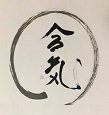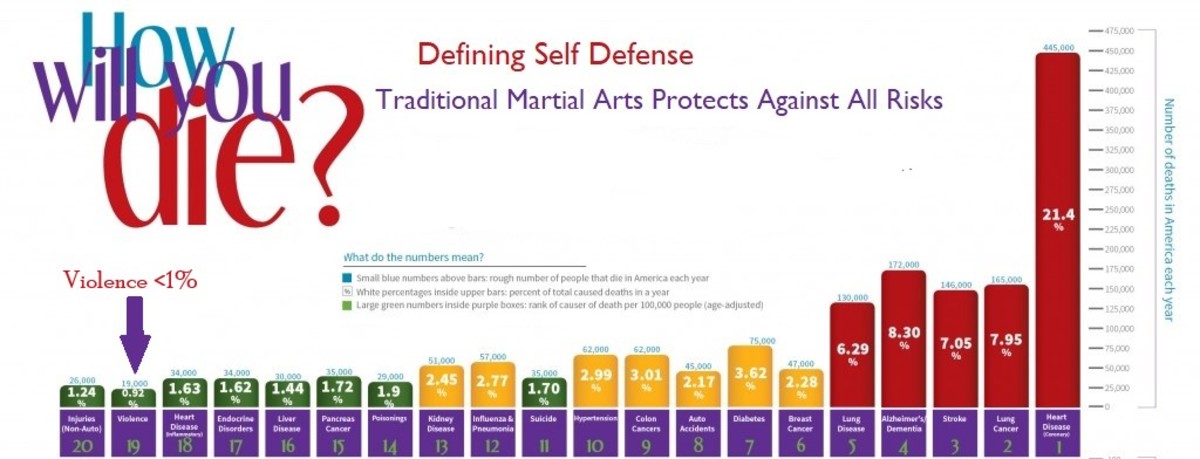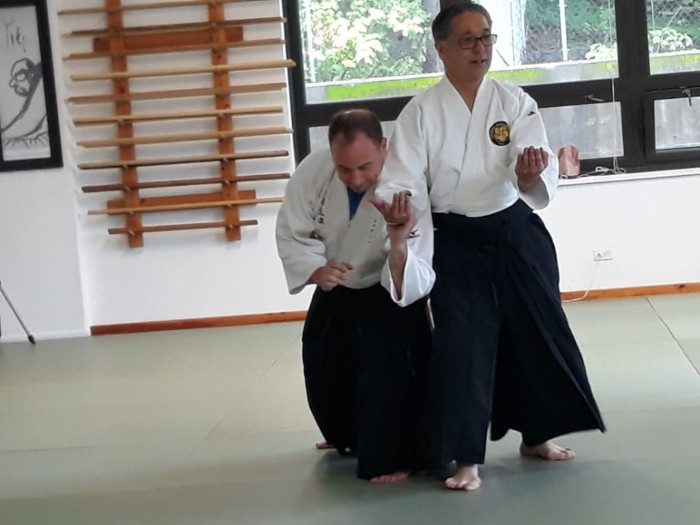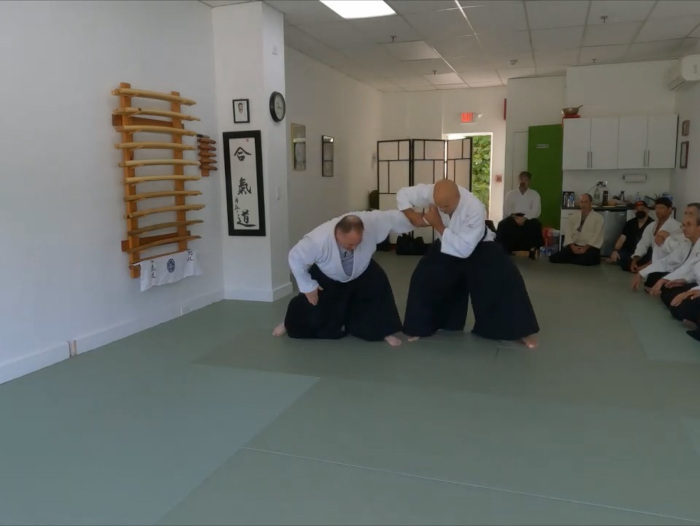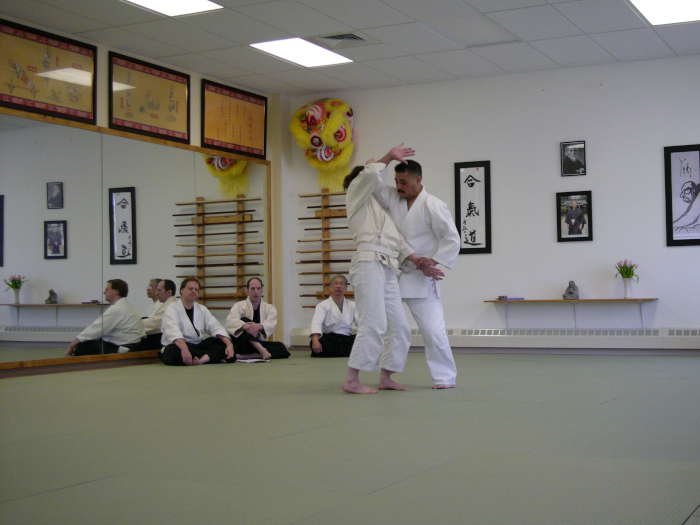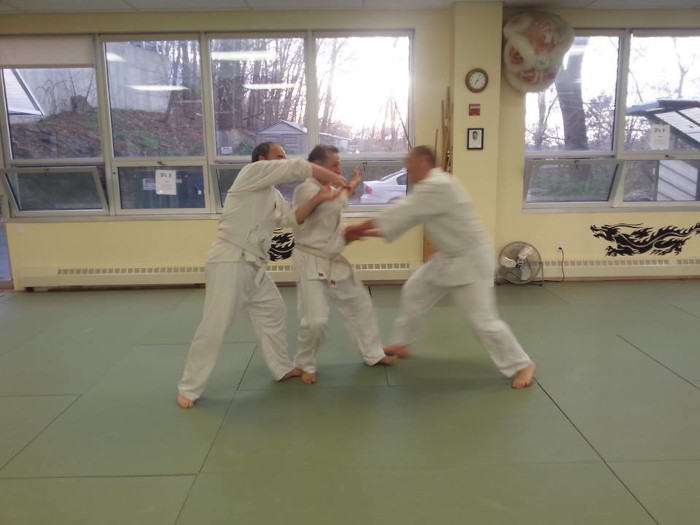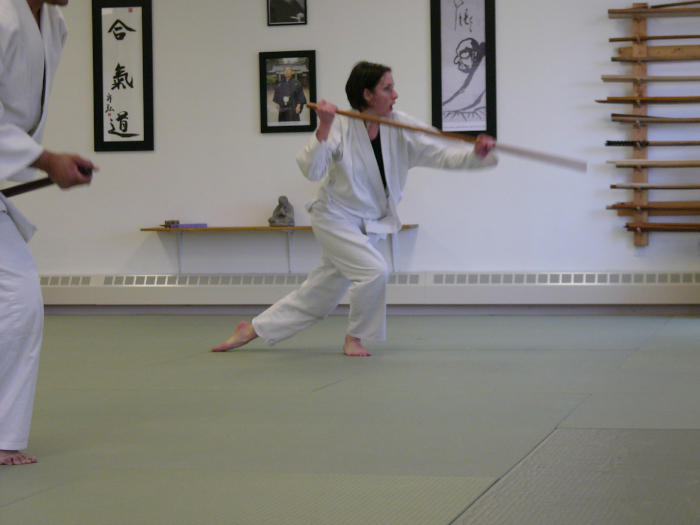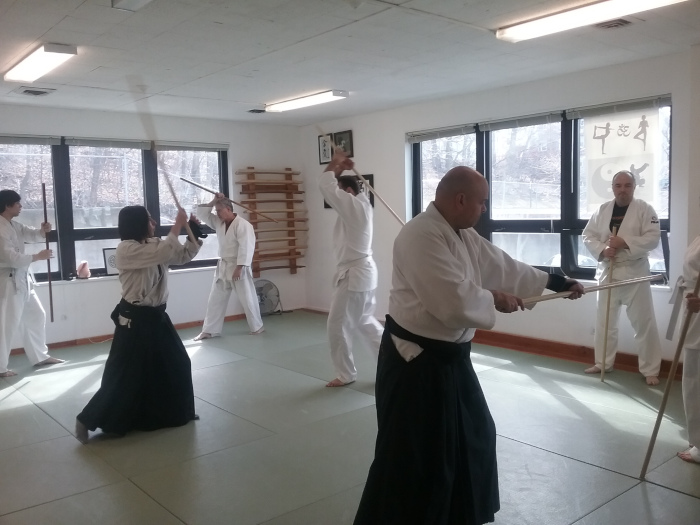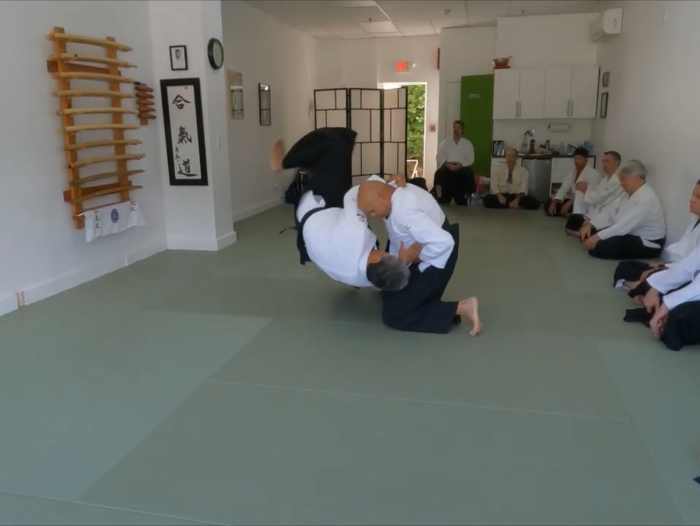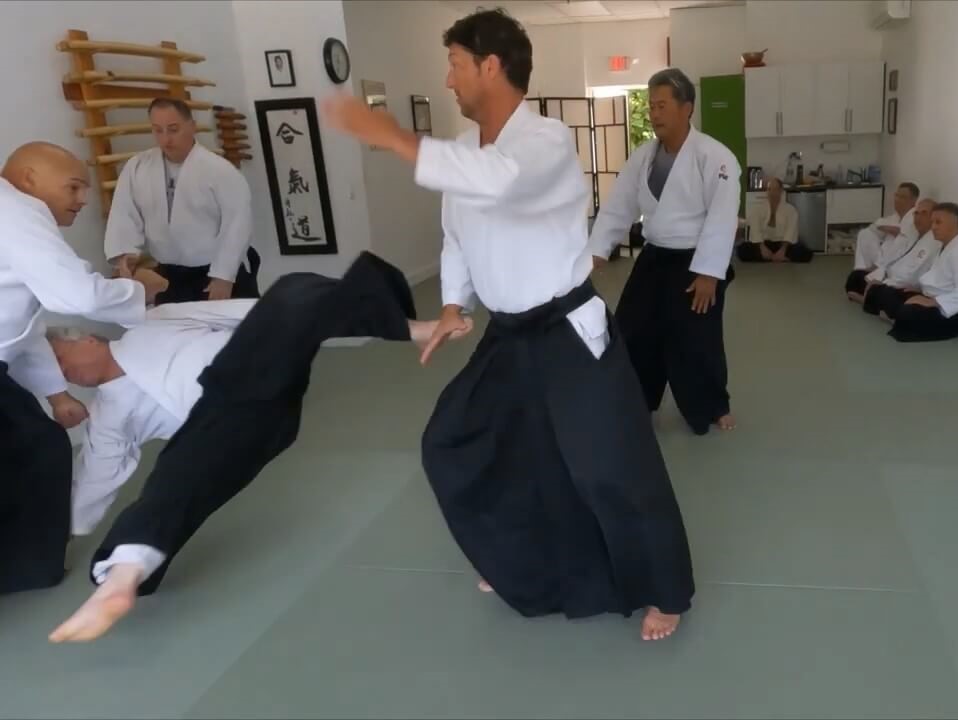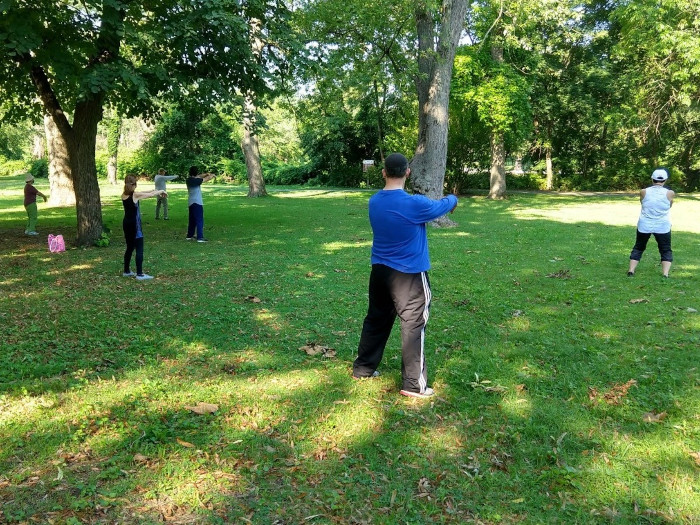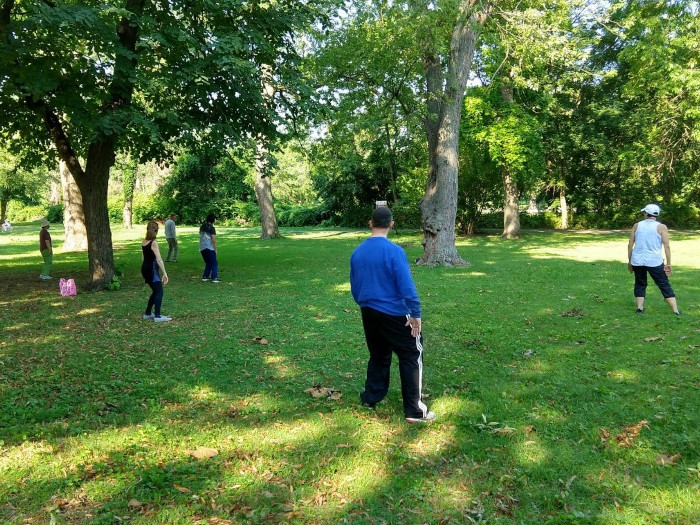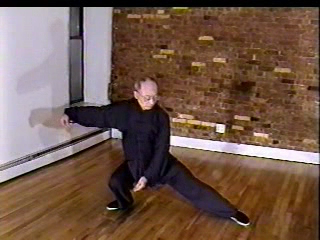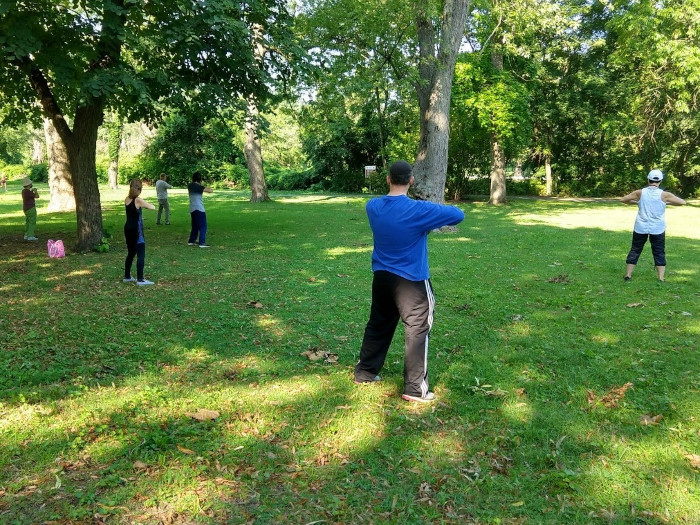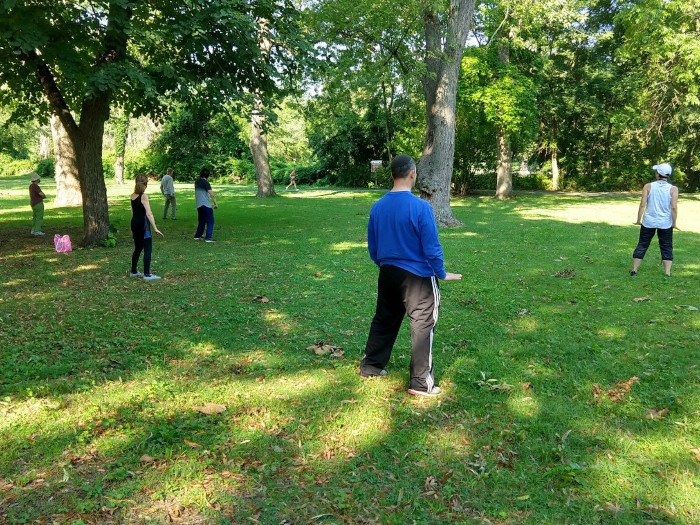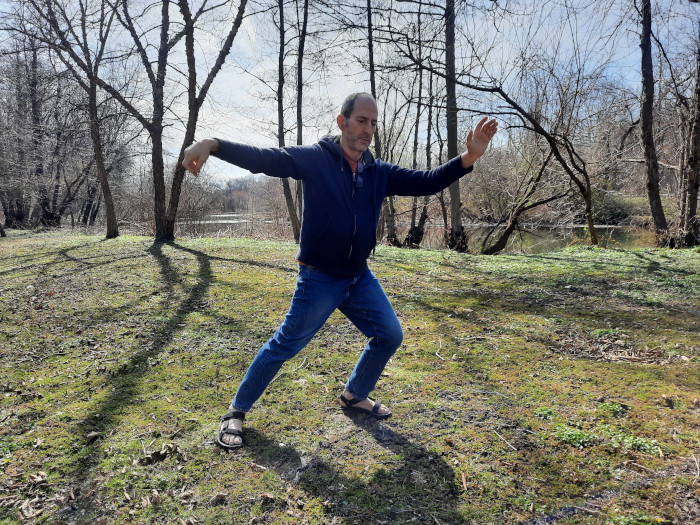Traditional Martial Arts Training for Self Defense
Preferred strategy is not to fight
Traditional martial arts training is a way of life that has many benefits, including self-defense. By learning to regulate our emotional and mental states, we reduce our risks of involvement in opportunistic violence or crimes of passion. Then we learn to be naturally relaxed, more aware, centered, unpredictable and confident, while still taking appropriate precautions for safety.
Typical Criminal Behavior
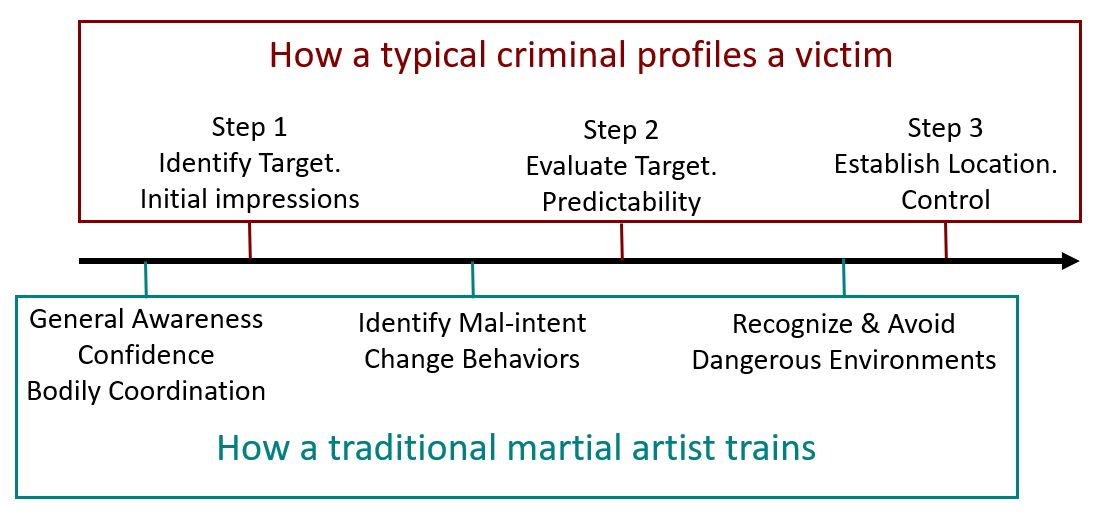
Traditional Martial Arts Training
Before step 1, the martial artist is relaxed, aware and moves with solidity and coordination. The criminal seeks an easy target who is unaware, looking at their phone, and uncoordinated.
Before step 2, the martial artist is aware of their environment and sees out of place behavior with possible criminal intent. The martial artist will change behaviors, focused on defensive strategies.
Before step 3, the martial artist will understand dangerous locations. With confidence in their ability to handle an assault, they will still take appropriate precautions such as avoiding a dark alley in a dangerous neighborhood.
How aikido training translates into self defense
The founder of Aikido began with a strong foundation of basics. Grounding the hips is taught first. The opponent resists strongly in one way. Training expands into roughly 250 basic techniques illustrating a wide range of movements that produces a full skill set. The principle of patience, which help avoid violent encounters, is learned by receiving painful wrist locks.Next, learning how to apply the techniques using the principle of blending with an attacker, and then later through fast motion the principle of timing and breathing are studied.
At the same time, the founder's weapons system is taught. Weapons are the advanced practice. Principles of grounding the hips are reinforced to teach powerful strikes. Relaxation in the face of danger is learned in this environment as well as heightened focus. Due to risk, they are taught mainly through kata.
After these basics are cemented, resistance is increased. Eventually, students practice doing techniques in the face of counters back and forth.
Weapons training becomes progressively more integrated with empty-handed technique.
Expansive awareness and relaxation under pressure are learned in unarmed and armed multiple attack freestyle. Outright competition is not used due to danger because there are no rules.
How tai chi training translates into self defense
Many people start tai chi training for health, and self defense is not a consideration. That said, understanding the most efficient method to defeat an opponent can be generalized to the most efficient way to defeat the opponent of an illness. Both benefits are aligned. Tai chi, as a method of self-defense, tends to work better for someone who wants to inspect the principles without distraction from a resisting attacker. For those who need to inspect how techniques work on someone else, Aikido may be better.Master Yu would often say you cannot use form for fighting. So why practice it? To develop skills you can use in a real situation. His form is rich in self defense detail right from the opening. Hands do not come up in front of shoulders, as in most forms, but in the middle which is better for self defense.
The principle of rooting on one leg is in the first movement after the opening. Then moving the straight line of your spine is how power is generated.
Patience or learning to be comfortable in uncomfortable positions allows one to make good decisions even when in difficult circumstances.
Natural breathing and timing are taught throughout the form.
The form has all the essential elements of self-defense. In fact, Chapter 4 of the form is known the fighting techniques as well as the Shaolin Kung Fu forms. Thorough investigation of the forms are the key. Push hands is a competitive practice that helps one test their knowledge of the form for self defense purposes.
